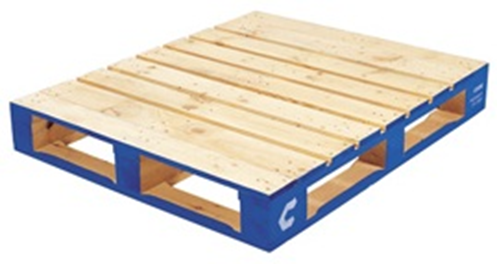It's time to spring clean your racking!
- Keith D Goodfellow (SARI)

- Apr 30, 2020
- 3 min read

The Covid outbreak has affected us all but we may still be able to extract some small benefit from what is an otherwise desperate situation for so many. You may now find yourself with that unaccustomed luxury of a bit of spare time. Why not use it to spring clean your warehouse. No, I’m not talking about a mop and bucket but the storage systems and stock. Today I’m going to talk about the storage racks and in a later post will discuss spring cleaning your stock.
As part of your safety programme you should be conducting regular internal inspections. This link explains the statutory requirements for inspections. We can provide onsite training to equip you for this task and we are also now starting to post blogs giving general guidance on inspections so check out our blog posts regularly for updates.
So, how can I 'spring clean' my racking? Well, when you carry out your regular weekly inspection much of the racking is obscured by stock. At any one time if you stand in front of a rack and look at it you can probably see 50-75% of the structure, with the rest obscured by stock. We know from experience that most damage occurs at low levels to storage racks mainly below 1m and to the front of the structure. So you can usually see the front of the racking (you may have to look behind bolted column guards or remove the ‘clip on’ type guard to allow a proper inspection for damage) but considerable damage can occur to the sides and back of the racking which remains largely hidden when stock is in the way. So now why not start pulling out all those pallets and stock in ground locations and check the frame bracing, rear uprights, rear footplates & floor fixings, and also rear beams and beam locking pins. You don’t actually need to pull out every pallet. Just one pallet adjacent to every frame, and this will often allow inspection of the opposing back to back frame if you are lucky. This way you will be able to conduct a much more thorough inspection including parts that are normally obscured in your standard inspections.
I find that a good high-powered LED torch is invaluable in shining light on the darker recesses of your storage racks so these can be a great investment and I always wear a bump cap when inspecting. It is so easy to become distracted and crack your head on a low-level beam. Our blog updates will give general guidance on inspecting but do beware that the guidelines for floor fixings at the rear of pallet racking changed in 2010. Prior to this they were not always a requirement depending on the configuration of the racks so if there are no floor fixings on the rear footplates don’t immediately rush to grab a hard hat! If there is any doubt consult the installer or check our web site for guidance.
Oh and yes maybe while you are at it you can get the broom out and clear away the dust of ages that has accumulated under your racks! This is particularly important around the base of the uprights and behind column guards to clear away all those plastic cups, stretch wrap, and miscellaneous rubbish that accumulates over time and ensure unrestricted visibility for inspecting footplates and floor fixings. If you can't see it you cant inspect it!
Good luck!
Oh, and finally if you want us to quote for your annual Racking Inspection click this link. If you want a quote for us to visit your site and provide Rack Awareness Training to train your staff to conduct your internal Racking Inspection click this link.




Comments